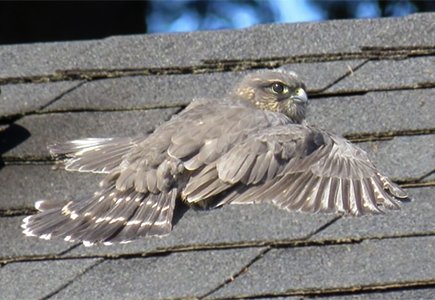
Juvenile Merlin sunbathing.
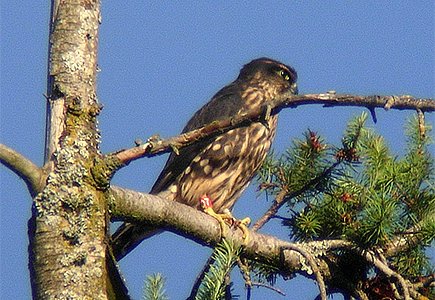
A banded juvenile male from northeast Seattle, perched on a dead-top tree near the nest site, a preferred perch site for Merlins.
Seattle Merlin Project
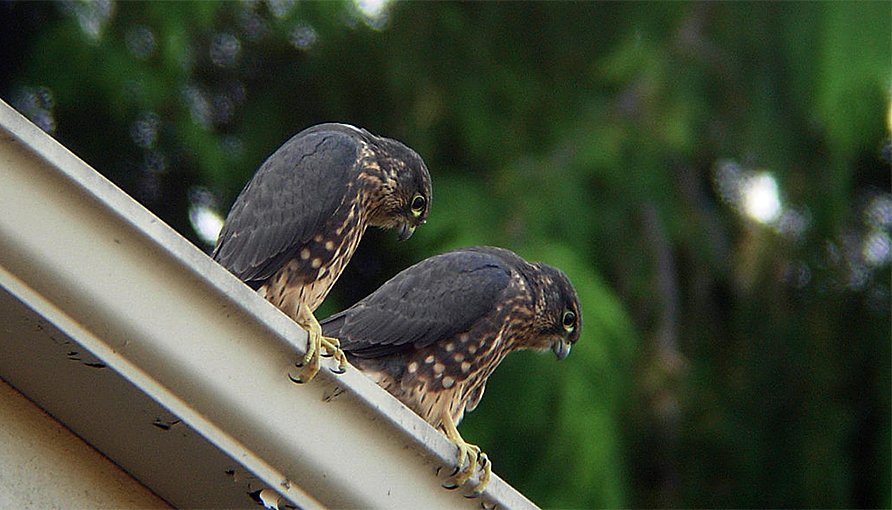
Juvenile Merlins perched near their nest site. Recently fledged siblings often hang out together for 3-4 weeks and continue to be fed by their parents before they disperse.
All photos by Kim McCormick.
The first documented Merlin nest in Seattle was found by Kim McCormick in 2008, after several years of searching. The nest, in a northeast Seattle neighborhood, successfully fledged five young. Kim noticed that the adult female had a federal band on one leg; after a patient effort, she learned that the Merlin had been banded by local raptor researcher Jack Bettesworth. Kim continued to document Merlin activity for the next several years, and through
Ben Vang-Johnson and Kim McCormick gave a Zoom talk for Pilchuck Audubon in November 2020 on highlights of the Seattle Merlin Project: nest site characteristics, behavioral observations, and urban habitat adaptations.
For More Information
NEW – Haak, Bruce. 2021. Magical Merlins. Falco Sapiens Press.
See Kim and Ben’s chapter on urban merlins in the Puget Sound region.
Hunn, E. 2012. Birding in Seattle and King County. Second edition. Seattle Audubon Society.
Merlins. Urban Raptor Conservancy.
Sodhi, NS, James, PC, Warkenron, IG, & Oliphant, LW. 1992. Breeding ecology of urban Merlins (Falco columbarius). Canadian Journal of Zoology, 70, 1477-1483.
Wahl, T, Tweit, B, & Mlodinow, S. Eds. 2005. Birds of Washington: Status and Distribution. Oregon State University Press.
Report a sighting
Contact URC to report a sighting of a banded Merlin, possible breeding activity, or general observations in the Puget Sound area.
Merlins are color-banded (red in previous years, now blue) on one leg (females: left, males: right) and a silver federal band on the other leg. Each color band has a two-character ID code.
If you find a Merlin through a spotting scope or powerful camera, watch for a colored band if it stretches or moves.
Project Goals
In 2013 Kim and Ben started the Seattle Merlin Project. The project uses nest searching, nest monitoring, banding, year-round observation, nest tree measurements, and remote sensing landscape characterization to:
- Determine fidelity of breeding and wintering sites and of breeding pairs
- Document annual spatial movements of individuals breeding or wintering
- Determine annual nesting success and productivity of breeding pairs
- Estimate nesting density
- Investigate natal dispersal of juveniles
- Describe nest site characteristics, plumage characteristics, and other natural history
Results
This urban-nesting Merlin population is expanding.
- In 2018, 18 pairs were found in the Seattle metropolitan area and 14 fledged young. Within the city, 7 nesting pairs were found and 4 fledged young.
- In 2013-2018, 79 active nest territories were documented and monitored in Seattle and the surrounding region. 62 of these nests fledged young—a success rate of 78.5%!
- As of 2018, the project had banded 77 Merlins, recorded over 200 banded Merlin sightings, and were able to read the IDs on over 100 of these bands.
The Seattle Merlin Project documents more and more nests each year as we get better at finding Merlins and learn more about the local territories. We are probably also documenting the expansion of this young urban and suburban Merlin population.
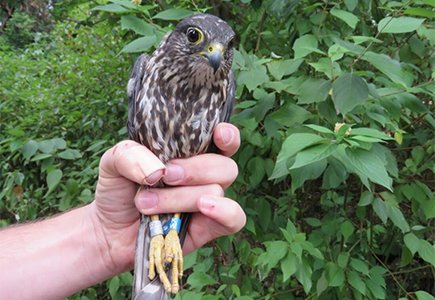
Adult female from the first documented Seattle Merlin nest. First banded by Jack Bettesworth, she was captured years later by the Seattle Merlin Project and rebanded with a different color.
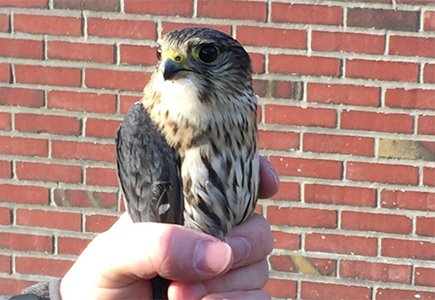
Adult male Taiga Merlin. Taigas are found in Seattle during migration and winter seasons but are not known to breed here. Compared to the Black Merlin below, Taigas have broader white tail bands (not shown), cleaner throat, lighter and thinner breast streaking, and lighter head, cheeks, and supercilium (eyestripe).
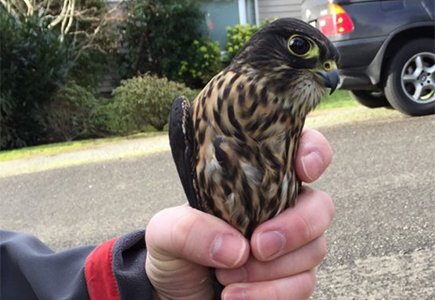
Adult male Black Merlin banded in Seattle. Black Merlins breed locally. They have much thinner and broken white tail bands (not shown), more throat streaking, darker and heavier breast streaking, darker head and cheeks, and a smaller supercilium.